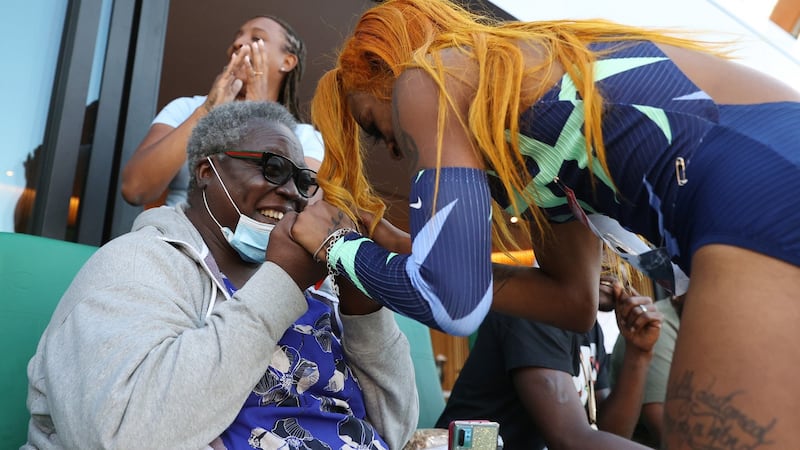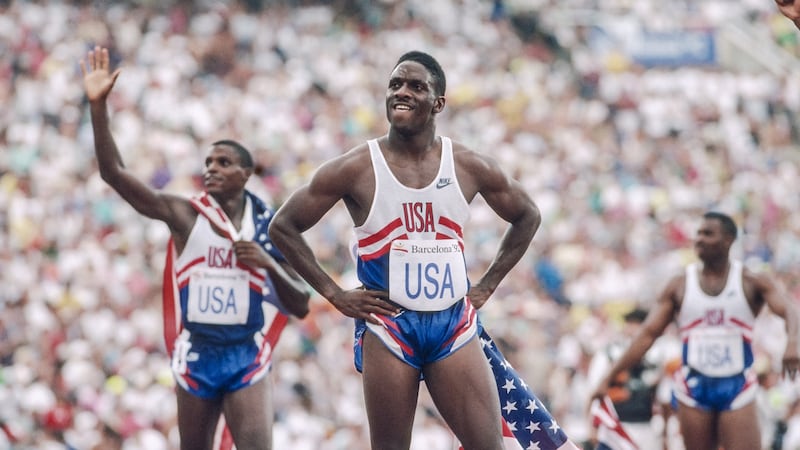At the US Olympic Trials in Portland, Oregon last weekend, Sha’Carri Richardson won the 100m in 10.87, stamped her ticket to Tokyo, and generally lit up the place. Wearing an eye-catching orange weave in her hair, elongated technicolor nails on her hands, and mink eyelashes, this stunning amalgam of glamour and pace inspired a thousand inevitable Flo-Jo comparisons. Still out of breath at the finish, the 21-year-old from Dallas ran straight into the bleachers at Hayward Field, clambered up the steps, and folded into her grandmother’s arms.
“Without them, there would be no me,” she said. “Without my grandmother, there would be no Sha’Carri Richardson. My family is everything, my everything until the day I’m done!”
At the very least, he might be deemed radioactive by any clean competitor. Not in track and field
After that piece of wholesome sporting theatre, she gave a live television interview, mentioning she’d found out earlier in the week that her birth mother, who abandoned her as a child, had died. A startling detail amplifying the growing belief America is about to fall hard for its new track superstar, a charismatic performer with a compelling back story (her girlfriend chooses her hair colour before races) that includes attempting suicide in high school. Yet, in nearly every interaction with the media, Richardson also pays homage to her coach, citing him as one of the only people who truly understands the struggles she has endured. And therein lies a problem.

Her coach is Dennis Mitchell. You may remember the name. You may even recall the sullied reputation. Finished fourth in the 100m final at the 1988 Olympics, the so-called dirtiest race in history. What came after was a career so tawdry that when the sports doping Hall of Fame is finally built, Mitchell deserves his own display, somewhere between the Lance Armstrong wall of tattered yellow jerseys and the glass case containing the full range of Barry Bonds’ incredible, expanding helmets. He might not quite have enjoyed the same stature as that pair but he has left his own indelible mark on cheating culture.
Radioactive
In 1998, Mitchell tried to explain away an excess testosterone finding by claiming the night before the test he’d drunk five beers and had sex with his wife four times. It was her birthday, and, in his words, “the lady deserved a treat”. During the BALCO investigation, he testified about receiving Human Growth Hormone injections from his coach, Trevor Graham, and, most recently, he was caught on tape assuring an undercover reporter he could get him steroids. A recidivist resumé that would be enough to get somebody drummed out of most sports. At the very least, he might be deemed radioactive by any clean competitor. Not in track and field.
“Y’all don’t have to worry about any doping situations coming from me,” said Richardson when asked about working with Mitchell earlier this year. “I back him 1,000 per cent.”
She has been similarly steadfast in vouching for Justin Gatlin, another sprinter with multiple steroids offences, who is one of her training partners in Clermont, Florida.
“She carries such a firecracker,” said Gatlin about Richardson last week. “She’s capable of running 10.6. I’ve seen her at practice, and she’s capable of running 10.5, actually. She can definitely shock the world.”
To understand how the country’s brightest young sprinting talent ended up in such nefarious company as Gatlin and Mitchell, we need to revisit the NCAA championships in Austin two summers back. As a freshman at Louisiana State University, she set new World Junior records in the 100m and 200m in the space of just 45 minutes, the emphatic manner of her victories and the eye-catching times announcing the arrival of a new sensation. Within days she turned pro, signed with Nike and started looking for a coach.
it seems a tad unfortunate that Nike has ... nudged this young woman in the direction of a serial doper
“The way that me and coach Dennis ended up crossing each other’s paths was after the Nationals,” said Richardson. “Nike, myself and my agent - along with my manager - we all just sat down and we talked. That decision was made and I came down here and it has been a dynamic duo between me and him since then.”
Intensify
How shocking that Nike were involved when it was decided Richardson should go work with Mitchell. The same Mitchell, who, during a brief stint advising Marion Jones (once a star of so many slick Swoosh commercials), admitted having discussions about where to source her performance-enhancing substances. The same Mitchell who runs Star Athletics where his wife, Damu Cherry-Mitchell, a former Olympic hurdler banned for two years back in 2003 for testing positive for nandrolone, is vice-president.

It seems a tad unfortunate that Nike, the company which has, by sheer bad luck, repeatedly sponsored so many corrupt athletes through the decades, nudged this young woman in the direction of a serial doper. Perhaps they believe nobody cares anymore about guilt by association. Maybe when it comes to steroids and athletics very few people do.
“I just want the world to know that I’m that girl,” said Richardson last weekend. “Every time I step on the track, I’m going to try to do what it is that me, my coach and my support team believe I can do, and with the talent that God blessed me to have.”
As long as that girl remains with that coach, too much about her is going to be difficult to believe.
















